Transmission shifters have come in all shapes, sizes and locations since the beginning of time. Even manual transmissions could be had with shifters on the steering column ("three on the tree") in addition to the usual "stick shift" that grew out of the floor or center console, but it's obviously the automatic that has enjoyed the widest array of shifting options. The PRND shift order used to be assured, with the most common variants being a big fat stalk mounted on the steering column, or some sort of stick sprouting from the center console. Sometimes that stick needed you to first press a button to move, sometimes it needed to make its way through gates.
Now, there was occasionally some experimentation over the years with pushbutton shifters, especially in the 1950s and '60s, but for the most part, drivers in recent decades didn't really need to think too much when going from car to car. And then the electronic shifter became commonplace. Free from the need to be physically connected to the transmission, they allow designers and engineers to create new, novel ways to select Park, Reverse and Drive. Usually, what they come up with are just examples of being different for the sake of being different. When properly utilized, however, there is an actual advantage to them: they take up less space (or none at all) on the center console, which allows for bigger cupholders, additional storage or infotainment controls. It's pretty obvious which of the below shifters do a better job of this space efficiency than others, as well as which fall into that "different for different sake" category.
And holy cow are there a lot of electronic shifter designs these days. We've broken them down into general categories below, and we've almost certainly missed a couple. If all this seems overly complicated, maybe just stick to a manual?
The Ubiquitous Monostable Shifter
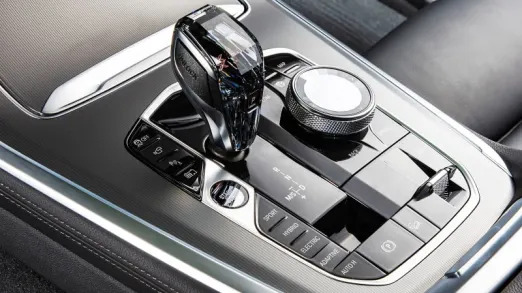
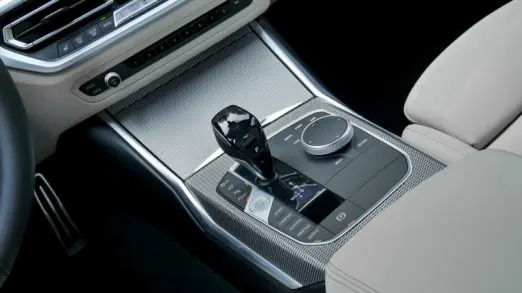
BMW
We're mostly going alphabetically here, but it's fitting that BMW goes first as it was one of the first brands to introduce and popularize what has become the most common type of electronic transmission shifter. Roughly akin to a joystick, the term "monostable" indicates that no matter which direction you push or pull it, it returns to its original position. In most cases, you push forward through a detent to get to Reverse and back through a detent to get Drive. In the case of BMW, you then slide it laterally to find a separate "gate" devoted to up and down manual shifting. This functionality has remained the same over the years even if BMW has changed the knob design. It also set a precedent for other brands.

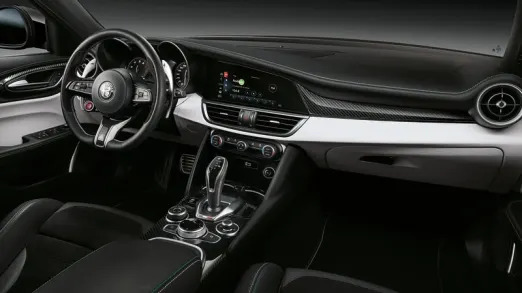
Alfa Romeo
This works exactly the same as BMW's. It was upgraded to have a nicer piece of hardware for 2021 complete with a little Italian flag at its base. Ciao!
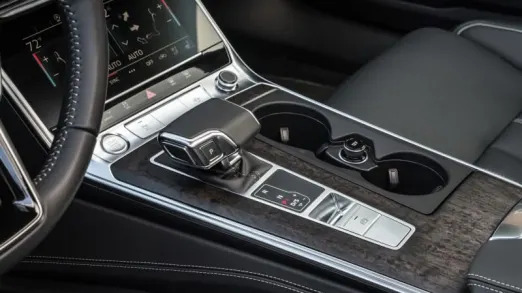
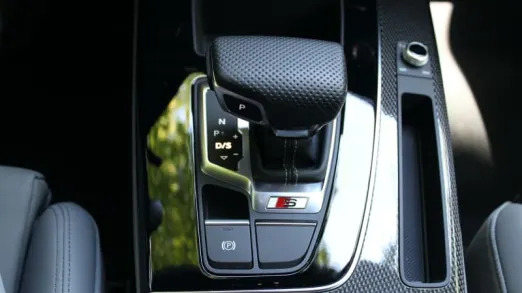
Audi
The monostable found on many Audis (above left) works similar to BMW's but the shift knob design is quite different. It usually doubles as a place to rest your arm while using a touchscreen.

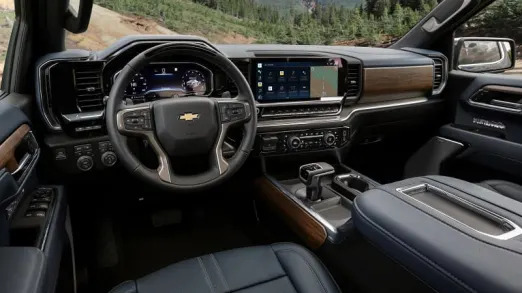
GM
Found in Cadillacs in particular, this monostable above left works basically the same as BMW's. Earlier versions had an unusual dogleg design for Reverse that made you push up and to the left to engage. This was supposedly for safety, but was confusing. Above right you can see the new 2022 Silverado has a monostable that would seem to function the same but has a more Audi-like design.
Jaguar


The Jaguar F-Type has always had a cool monostable shifter that felt like the butt of a futuristic space gun in your hand. It gradually spread throughout the Jaguar-Land Rover lineup, frequently replacing the old rotary shifter. Unfortunately, the space gun is being replaced in all Jaguars but the F-Type with this nobby little sledge instead. Boo.
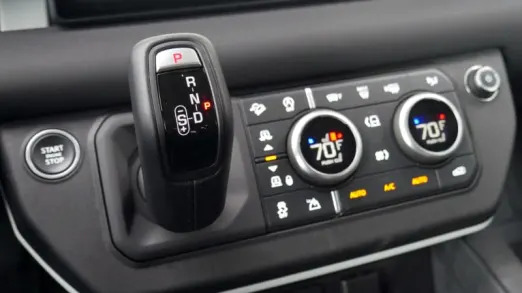

Land Rover
Land Rover uses monostables, but has different knobs. The Defender's unique, dash-mounted knob is shaped like a bent nail, while the Discovery and new Range Rover get the nobby little sledge (or "palm shifter") shared with corporate sibling Jaguar.


Mercedes-AMG
The Mercedes-AMG GT coupe and sedan both feature a monostable shifter on the center console, versus the column-mounted shifter found on all other Mercedes (see below). Its small size puts in on the border between this category on the next, mini monostable category.
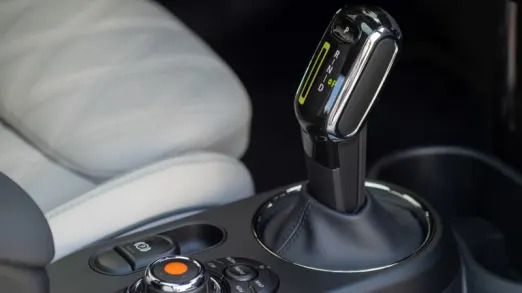

Mini
The electric Mini Cooper SE has a monostable shifter that works the same as those in parent company BMW's cars. The knob is different, though.


Nissan and Infiniti
The new Nissan shifter, found in the Rogue and show above left, is a monostable design. It's a bit smaller than the norm, but not quite to the same level as the mini variants shown below. Sister company Infiniti also uses a monostable in its QX50 and QX55, shown above right, but it's a heftier, higher-quality piece that also locates the Park button separate of the knob itself (which is annoying).
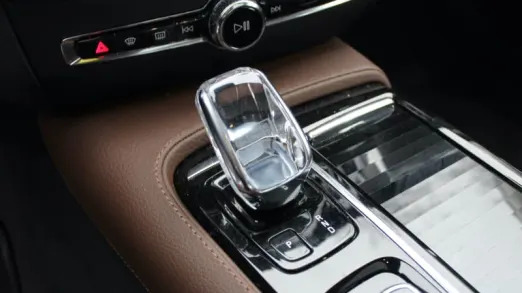

Volvo and Polestar
Electrified corporate cousins of Volvo and Polestar share a common monostable shifter unit, but the knobs differ. Range-topping Volvos get a knob furnished out of Orrefors crystal. Fancy. The Polestar shifter works the same, but instead of crystal, there's a hole in it. Wacky.
The Miniature Monostable
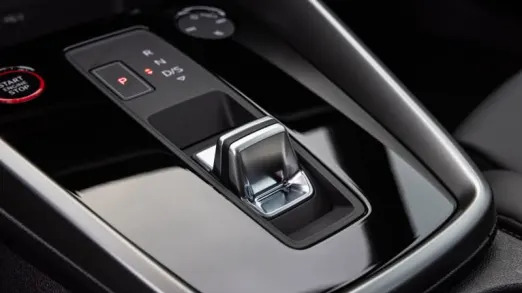
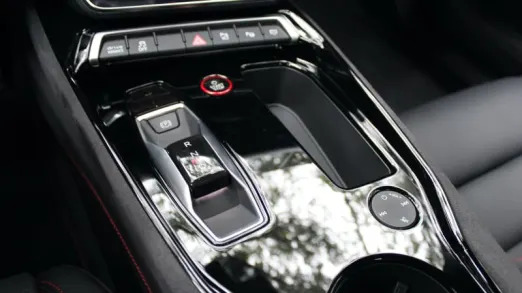
Audi
Audi, like other Volkswagen Group brands, has introduced a sort of Monostable Mini that broadly functions in the same Forward/Reverse and Back/Drive orientation, but it uses a variety of weird, tiny, nub-like controls. We don't really like them, mostly because they look unsubstantial and a bit lame. The Audi S3 is above left, the Audi e-Tron GT is above right.
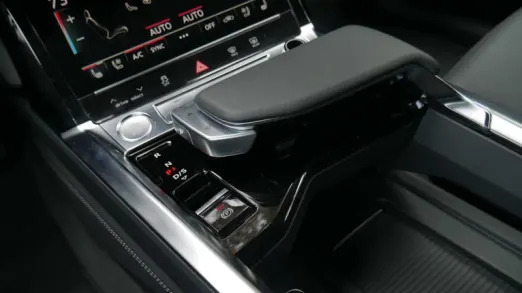
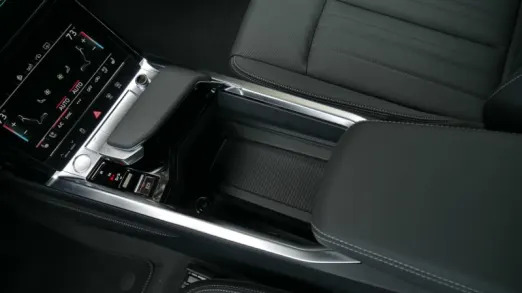
Audi e-Tron
Yet another Audi take on the monostable. You still push forward for Reverse and pull back for Drive, but here, the shifter is effectively flopped on its side and operated with your thumb (Reverse) or index finger (Drive).
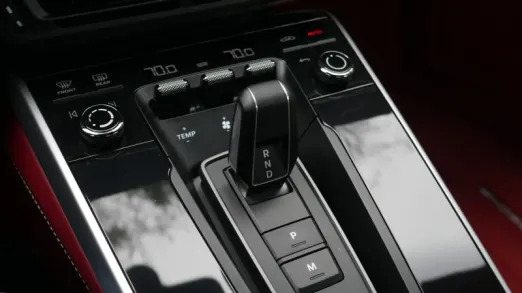

Porsche
This is basically the same as what you'll find elsewhere in the Volkswagen Group, but it just looks extra-dopey in Porsche. Even if a shifter is rarely used in an automatic Porsche, there's something so unsubstantial and unrewarding about using this little tab. It's located on the center console in the 911 (above left) and on the dash in the Taycan (above right). Other Porsches have more traditional automatic shifters.
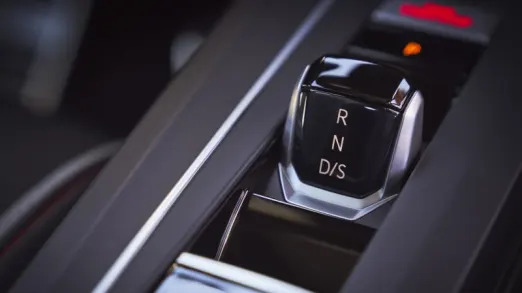
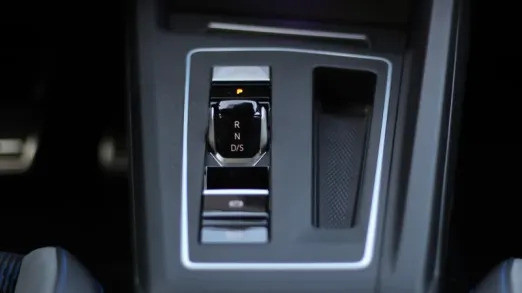
Volkswagen
Again, pretty much the same nub deal as what you'll get in an Audi or Porsche, but in a Volkswagen. Also, again, in a performance vehicle like a GTI (left) and Golf R (right), it just seems a bit lame.
The Rotary PRND
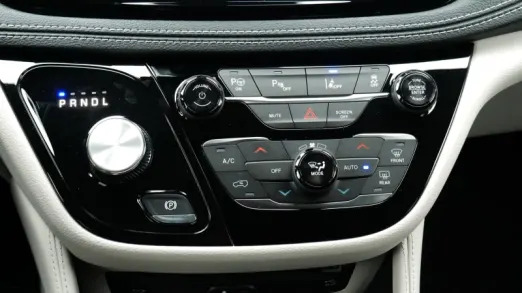

Chrysler Pacifica, Jeep Grand Cherokee and Wagoneer, Most Ram Trucks
This simple rotary design basically replaces the north-south PRND shift knob and replaces it with an east-west knob. It also saves space by allowing for a dash-mounted placement, thereby keeping the center console area open in both the Pacifica and six-passenger Ram. It just looks fancy in the new Grand Cherokee and Wagoneer.
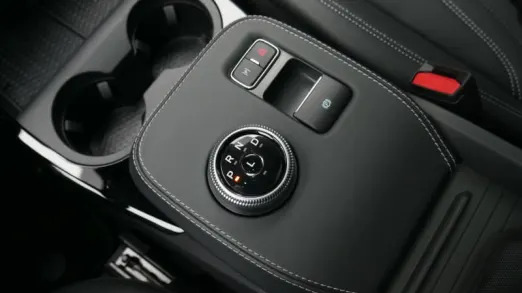
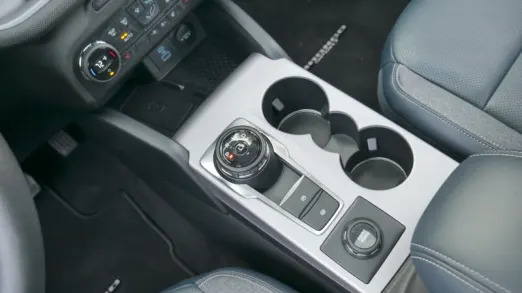
Ford
The rotary shifter has been found throughout the Ford lineup for nearly a decade now, albeit with variously different knob hardware. This one is slightly different, in that there aren't hard detents "at the end" of its travel for Park and Drive. The "P" lights up to let you know you're in Park, but you can keep twirling the dial past that point. According to Ford engineer Leeway Ho, "Our extensive customer research showed that users understand 'P' and 'D' as the two end points and the most commonly used positions ... so they just twirl freely and know there’s no danger of overshooting their desired position, which is what a physical stop prevents. A quick rotation of the wrist without discreetly counting indentations will put the car into 'P' or 'D,' depending upon which way you’re rotating, without the harsh endstop you would encounter otherwise. In addition, the customer will see Park position in the cluster, and the car provides a subtle audible feedback when you’ve selected 'P.'”
The Rotary Monostable
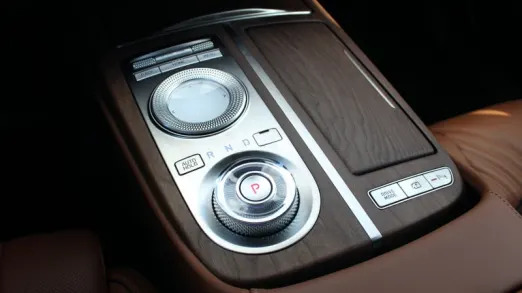
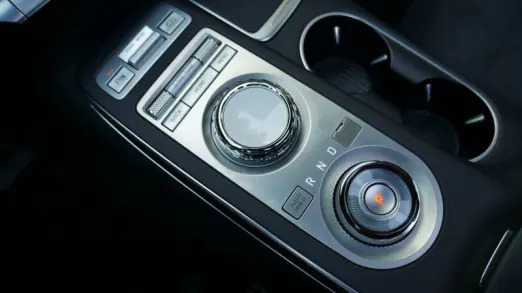
Genesis
Genesis utilizes a rotary shifter, but its functionality differs from those of the others. It's vaguely similar in concept to the monostable where you twist left for Reverse and twist right for Drive. You then press the Park button in the middle. Of course, the Genesis GV70 (above right) complicates things by adding a second knob of virtually the same size adjacent to it that controls the infotainment system. In the G80 and GV80 (above left), the infotainment controller is more like an old iPod flush-mounted scroll wheel.
The Rotary Glowing Orb
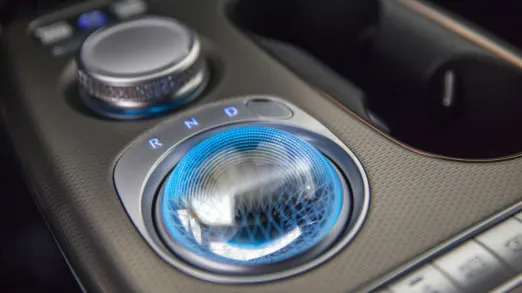
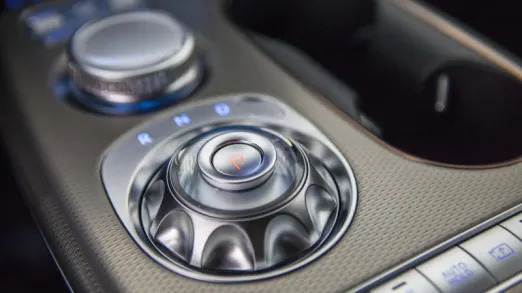
Genesis GV60
The rotary "Crystal Sphere" shifter of the new electric GV60 selects a gear in the same method as the other Genesis rotary shifters: twist left for Reverse, twist right for Drive, press button for park. But, there's a wrinkle. When parked, a glowing glass hemisphere with an intricate lattice pattern sits on the center console. The lighting within can be customized with dozens of preset colors (or a hue of your own choosing) to match the ambient lighting on the doors and dash. When you've authenticated yourself as the driver, the orb flips over to reveal the ornate rotary gear selector. Genesis claims it's actually a safety feature because you'll clearly know when the car is actually on. That can be an issue in a car without an internal combustion engine, but any claim that a fanciful electronic shifter is a safety feature does seem dubious.
The Column Shifter 2.0
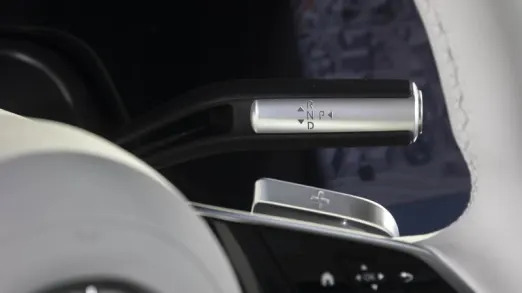
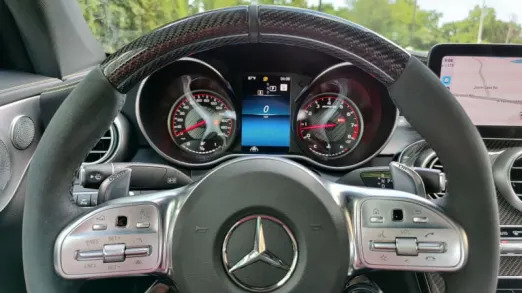
Mercedes-Benz
Mercedes was one of the earliest automakers to widely adopt electronic shifters, and immediately seized upon their advantage of freeing up center console space by removing it from the center console altogether. Virtually every Mercedes, apart from select AMG models, has an electronic column shifter. It works a bit like a monostable on its side: flip up for Reverse, flip down for Drive and press the button on the end for Park. Pretty simple. It can take a bit to remember where the shifter went, but once you do, it immediately becomes second nature. In fact, after swapping out of a Mercedes test vehicle and into something else, it's quite common for us to turn on the new car's windshield wipers when trying to put the car into Drive.
We do not have a photo of it, but the Lucid Air uses a similar shifter design, likely because of the precedent set by our next entry.

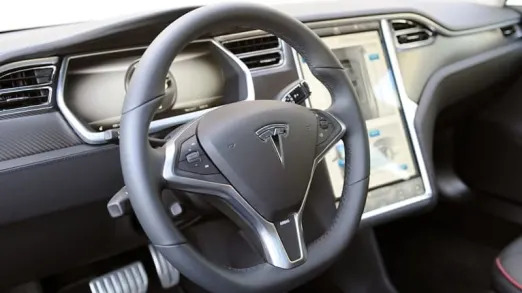
Tesla
Tesla originally used the same shifter design and hardware as Mercedes, but eventually moved on to unique pieces of hardware. Tesla is moving away from such physical hardware entirely, however. Keep on reading.
The Button Shifters


Aston Martin
Aston has used button-activated automatic transmission shifters since the DB9, which basically had the same setup as the DBX (above left). The Vantage has its buttons arranged in a triangle low on the center stack.
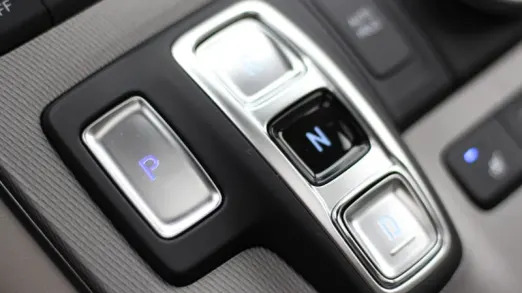
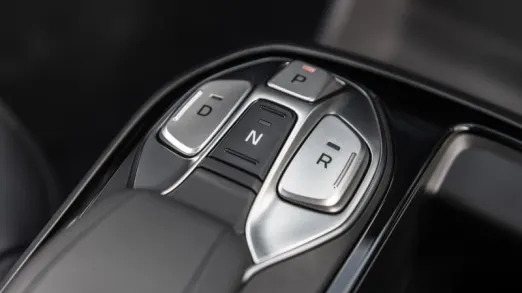
Hyundai
At present, there are two types of button-reliant shifters offered by Hyundai. The one above left is found in the Palisade, Tucson and Sonata. The other, above right, is essentially Hyundai's first go at a button shifter and found in the Ioniq Electric.

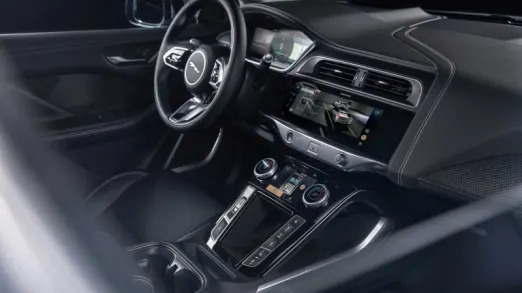
Jaguar I-Pace
The electric I-Pace is the outlier in the Jag lineup with its button-operated shifter.
The Push-and-Pull Button Shifters

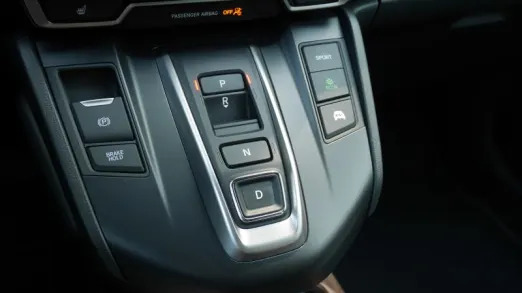
Honda / Acura
The electronic shifter found in most Hondas and Acuras is a common button design. You push buttons for Park, Neutral and Drive, then pull up on a tab-like control for Reverse. The ergonomics of this shifter greatly depend on its placement. The closer it is to where your hand would naturally rest in the car, as in the Acura TLX above left, the more natural it is to use. In the CR-V, above right, not so much.
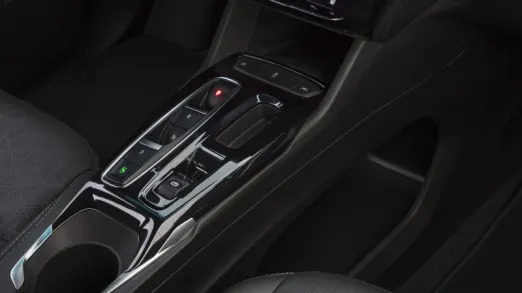
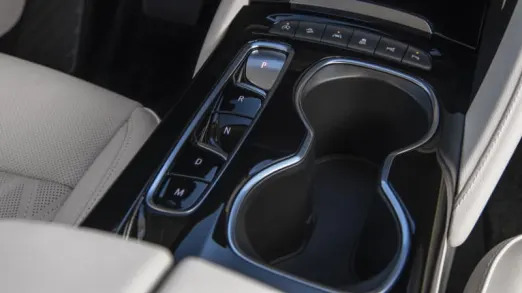
GM Variant 1: Console Mounted
This new push-and-pull button shifter design, found in the 2022 Chevy Bolt (above left) and Buick Envision (above right) among others, is similar to Honda's design but you pull for both Reverse and Drive.
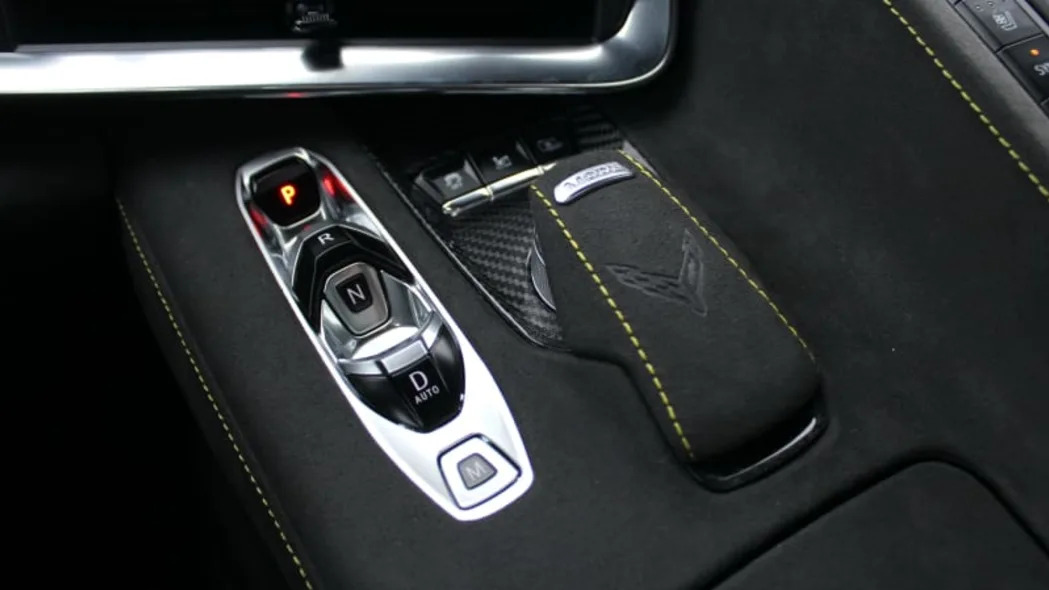
GM Variant 2: Corvette
The Corvette shifter is similar to the others above, but is a different piece of hardware.

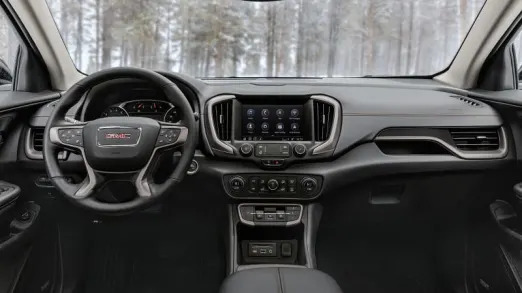
GM Variant 3: The GMC Terrain
One of our least favorite shifters, this is pure "different for different sake." Although the button design was updated (seen above right) from its original hardware (above left), the functionality remains. Push for Park and Neutral. Pull for Reverse and Drive. Bizarrely, push buttons for + or - gears. This thing also takes up a needlessly excessive amount of space and isn't ergonomic to use. Silliness.
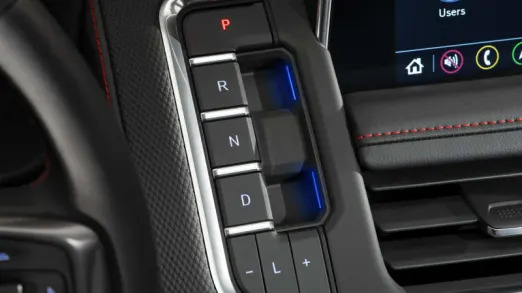
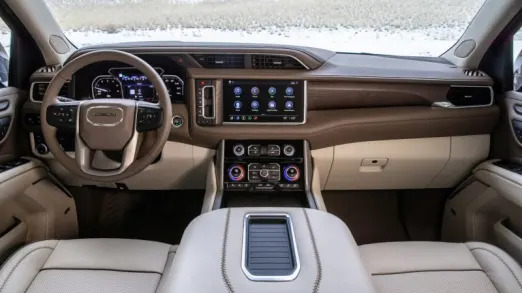
GM Variant 4: Full-Size SUVs
Found in the Chevy Tahoe and Yukon, this is the same design as the Terrain's, but flipped on its side to be a better ergonomic fit for your hand and placed in a closer, more sensible location between the steering wheel and infotainment screen.
The Piano Keys

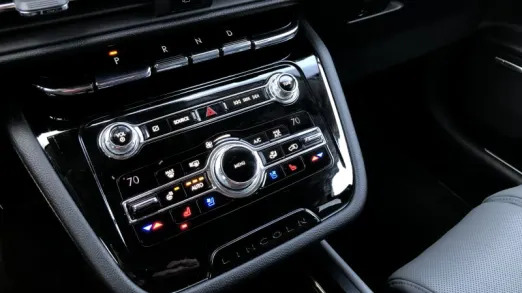
Lincoln
Only Lincoln does this. For a while, the brand used buttons stacked laterally adjacent to the central touchscreen. Then, with the Navigator, it introduced the current shifter design that is most comparable to piano keys. It's simple enough to work, if a bit silly.
The Nub
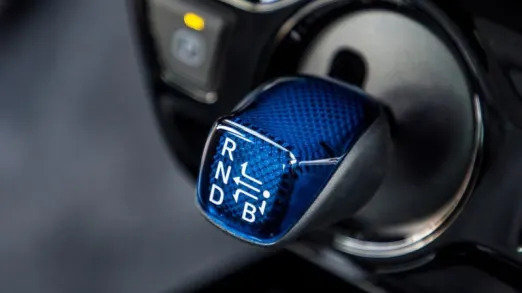
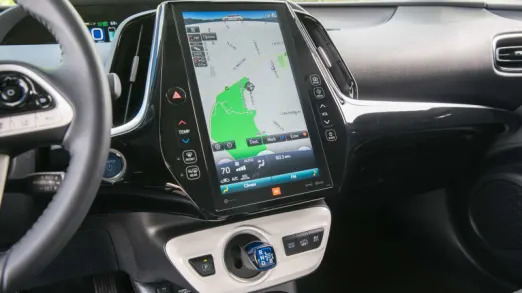
Toyota Prius
We break away from our normal alphabetical listing here to highlight the car that basically introduced the world to electronic shifters. And it did so with "the nub." This squat little doo-dad introduced for the second-generation Prius (the first one that was actually popular) and mounted to its dash is literally a monostable, but differs from the BMW-established norm by requiring you to slide it left and then up for Reverse, or left and then down for Drive. Some versions, as in the case of the Prius, have a B function that replicates engine-braking while going down hill.
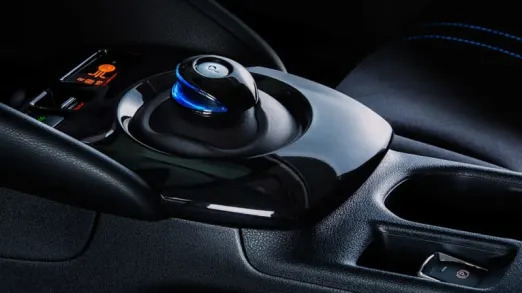
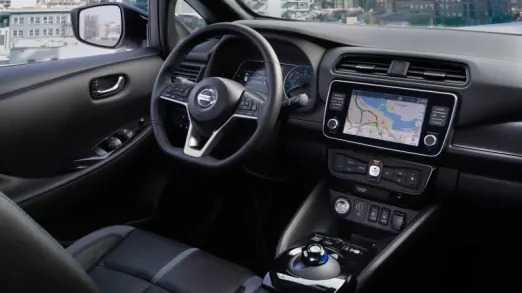
Nissan Leaf
Clearly inspired by the Prius, the Nissan Leaf debuted with a flying saucer-shaped shifter that operated in the same way as the Prius nub (minus B mode). It survived to the second-generation Leaf, pictured above.
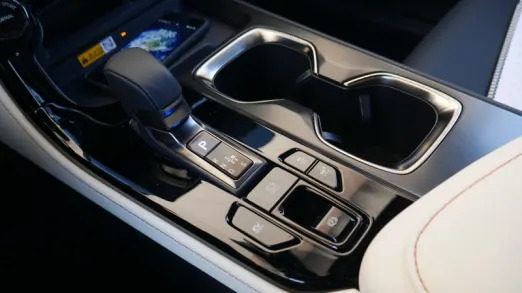
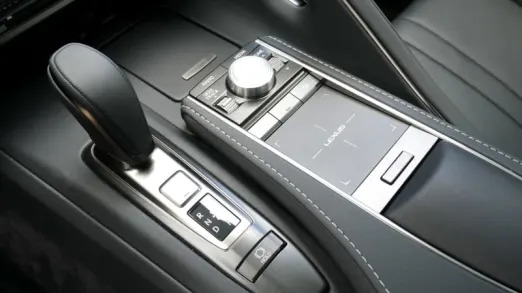
Lexus
The new Lexus NX and Lexus LC have a variation of the Prius "nub," even if the models in question aren't hybrids. The nobs aren't as nubby, but they functional the same. Left and up for Reverse; left and down for Drive. A Sport transmission mode replaces B when you slide it back.
The Touchscreen / Telepathy
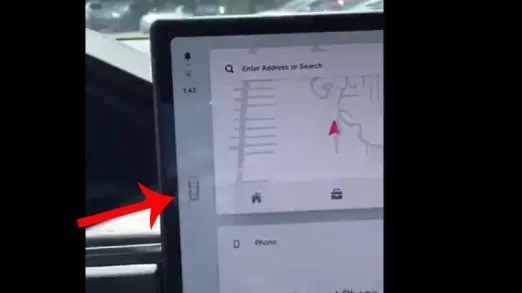
Tesla
When the Tesla Model S recently received it's first major refresh, the big news was the adoption of a yoke instead of a steering wheel. Somewhat buried by that news was that Tesla's previous, Mercedes-like, column-mounted electronic shifter would be replaced by a swiping motion on the touchscreen. Actually, that's not quite accurate. That functionality was intended to be the "override." According to Tesla CEO Elon Musk, the "car guesses drive direction based on what obstacles it sees, context and nav map." In other words, it should automatically just figure out which direction you want to go. Like, telepathy? In any event, none of the above seems like a good idea. You can see why that might be the case, at least in terms of the yoke and touchscreen shifter, thanks to Motor Trend's Christian Seabaugh and his attempt at a multi-point turn. Hey, maybe it would've gone better if he just let the car read his mind.
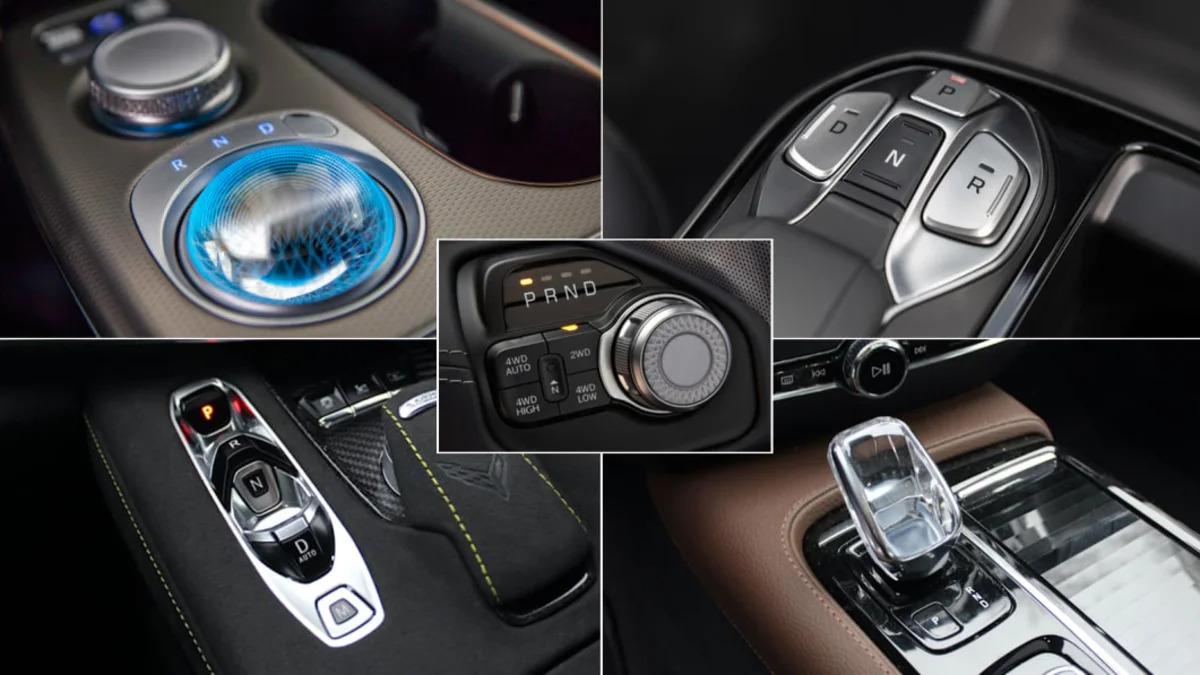


Sign in to post
Please sign in to leave a comment.
Continue